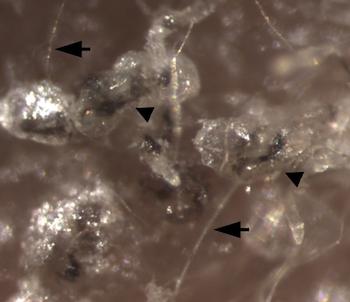According to the American Hair Loss Association, two-thirds of men will experience hair loss by the age of 35. But women are also affected, making up 40% of all hair loss sufferers. Affecting self-image and emotional well-being, the condition has been a difficult one to treat. But a new study brings hope - in the form of human hair-follicle-generating stem cells.
Researchers from the Perelman School of Medicine at the University of Pennsylvania have published results of their study in Nature, where they describe the method by which they were able to convert adult cells into epithelial stem cells (EpSCs).
Although using stem cells to regrow hair follicles has been a potential technique for combatting baldness, until now, nobody has been able to produce enough of these cells.
The team says they are the first to achieve this result in either humans or mice.
Led by Dr. Xiaowei "George" Xu, associate professor of pathology and laboratory medicine and dermatology at the University of Pennsylvania, the scientists started their research by using human skin cells called dermal fibroblasts.
How did the team produce the cells?
The researchers converted the human skin cells into induced pluripotent stem cells (iPSCs) by adding three genes. These iPSCs are able to change into any cell types in the body, so the researchers converted them into epithelial stem cells, which are normally found in a part of hair follicles.

The arrows show hair shafts, which were formed by iPSC-derived epithelial stem cells.
Image credit: Ruifeng Yang, Perelman School of Medicine, University of Pennsylvania
Using techniques from other research teams to convert iPSCs into keratinocytes - a main cell type in the top layer of the skin - Dr. Xu and colleagues showed they could "force" the iPSCs to make large quantities of EpSCs by controlling the timing of growth factors the cells received.
When they implanted these EpSCs into mice, the cells regenerated cell types of human skin and hair follicles, and also created recognizable hair shafts, which the team says shows promise for eventually regrowing hair in humans.
In 18 days, 25% of the iPSCs converted into EpSCs, which were then purified using the proteins expressed on their surfaces, the team notes.
Technique 'not yet ready for humans'
After mixing the human-derived EpSCs with dermal cells from mice, the team grafted them onto the skin of the mice and produced a functional human epidermis - the outermost layers of the skin.
The hair follicles that were produced from this, notes the team, were structurally similar to human hair follicles.
Dr. Xu says that this "is the first time anyone has made scalable amounts of epithelial stem cells that are capable of generating the epithelial component of hair follicles," adding that the cells could aid in wound healing, cosmetics and hair regeneration.
However, these cells are not yet ready for use in humans because the team has only solved one part of the equation. A hair follicle contains both epithelial cells and a certain kind of adult stem cell called dermal papillae.
No comments:
Post a Comment